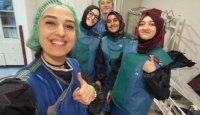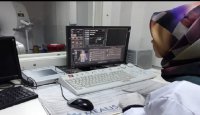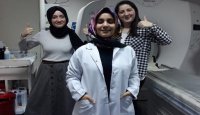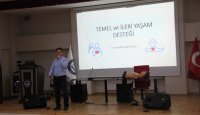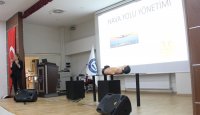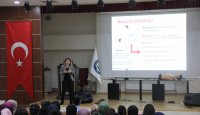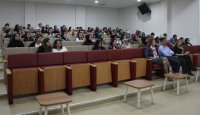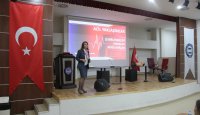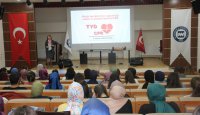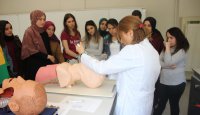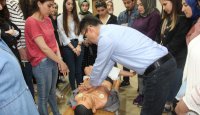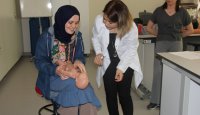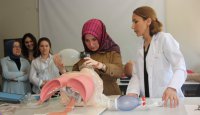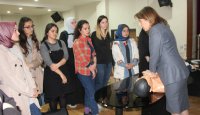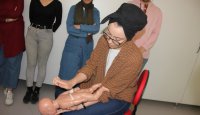Enterprise:
Medical Imaging Techniques Program started its activities in 1990 within Marmara University Vocational School of Health Services. In the same year, M.U. Faculty of Medicine faculty member Prof. Nevzat Gürmen was appointed as the head of the department. In the execution of administrative and academic activities, 1 Assist. Member, 2 Lecturers and 1 Health Technician.
Degree Awarded:
Graduates who successfully complete the program are given an associate degree diploma in the field of Medical Imaging Technician and receive the title of Medical Imaging Technician.
Admission and Registration Requirements:
Students are admitted with the Institutions Exam (YKS) Basic Proficiency Exam (TYT).
Rules on the Recognition of Prior Learning:
Students studying at our university may be exempt from some courses within the framework of certain regulations. If the course content is approved by the school administrative board and applied within the deadline, students may be exempted from the specified courses.
Qualification Requirements and Regulations:
To successfully complete all the courses available in the program and to have obtained a weighted GPA of at least 2.0 out of 4.
Program Profile:
It consists of 4 terms of 2 years. Synthesizing information in all Radiodiagnostic modalities (Conventional and Digital Radiology, Fluoroscopy, Digital Subtraction Angiography, Computed Tomography, Magnetic Resonance Imaging) used by the physician in the diagnosis and treatment of the disease, as well as in the field of nuclear medicine (SPECT, PET, PET-CT) and Radiotherapy (Simulator, Linear Accelerator, etc.), who can use their knowledge and communication skills in line with the education and training they receive, and who can apply the developing technology in the field. to train qualified technical staff who have skills, can use eye and hand coordination comfortably, and can coordinate with radiologists and other health personnel.
Employment Profiles of Graduates:
Graduates of the Medical Imaging Techniques Program can work as technicians in the Radiology (Conventional Radiology, Computed Tomography, Magnetic Resonance, Angiography, Mammography, Fluoroscopy), Nuclear Medicine and Radiotherapy departments of state, university, private hospitals, private medical centers and private imaging centers.
Transition to Higher Degree Programs:
Medical Imaging Techniques students who have graduated or are in a position to graduate can apply to undergraduate programs (Nursing, Nursing and Health Services) announced by the Measurement, Selection and Placement Center (OSYM) with the Vertical Transfer Exam.
Examination Regulations, Assessment and Grading:
For students who attend classes for one semester in an academic year, a midterm exam and a final exam are held in each semester. You can also add homework, projects, quizzes, etc. Students are required to attend 70% for theoretical courses and 80% for applied courses. A 4-point grading system and a letter system are used. Relative system is used in measurement and evaluation.
Graduation Requirements:
Medical Imaging Techniques Program students are required to complete a total of 130 credits and 130 ECTS in 4 semesters in order to graduate. In order to successfully complete all the courses available in the program (130 ECTS in total), students must obtain a weighted GPA of at least 2.00 out of 4.00.
Facilities:
Medical Imaging Techniques Program continues its education with theoretical and practical courses.
There are 3 Associate Professors, 2 Lecturers and 1 Health Technician in the Medical Imaging Techniques Program. In addition, instructors assigned from other programs and faculties work in the execution of the program courses.
Hospital Internship
Basic Life Support and Emergency Approaches Training
On May 3, 2019, "Basic Life Support and Emergency Approaches Training" was organized by the Anesthesia Program for 2nd year students of Medical Laboratory Techniques, Pathology Laboratory Techniques and Medical Imaging Techniques, and practical trainings were given on "Adult Basic Life Support, Child Basic Life Support, Airway Management, Infant and Adult Airway Obstructions" at the stations created.
This page updated by Medical Imaging Techniques on 28.08.2025 12:41:48

